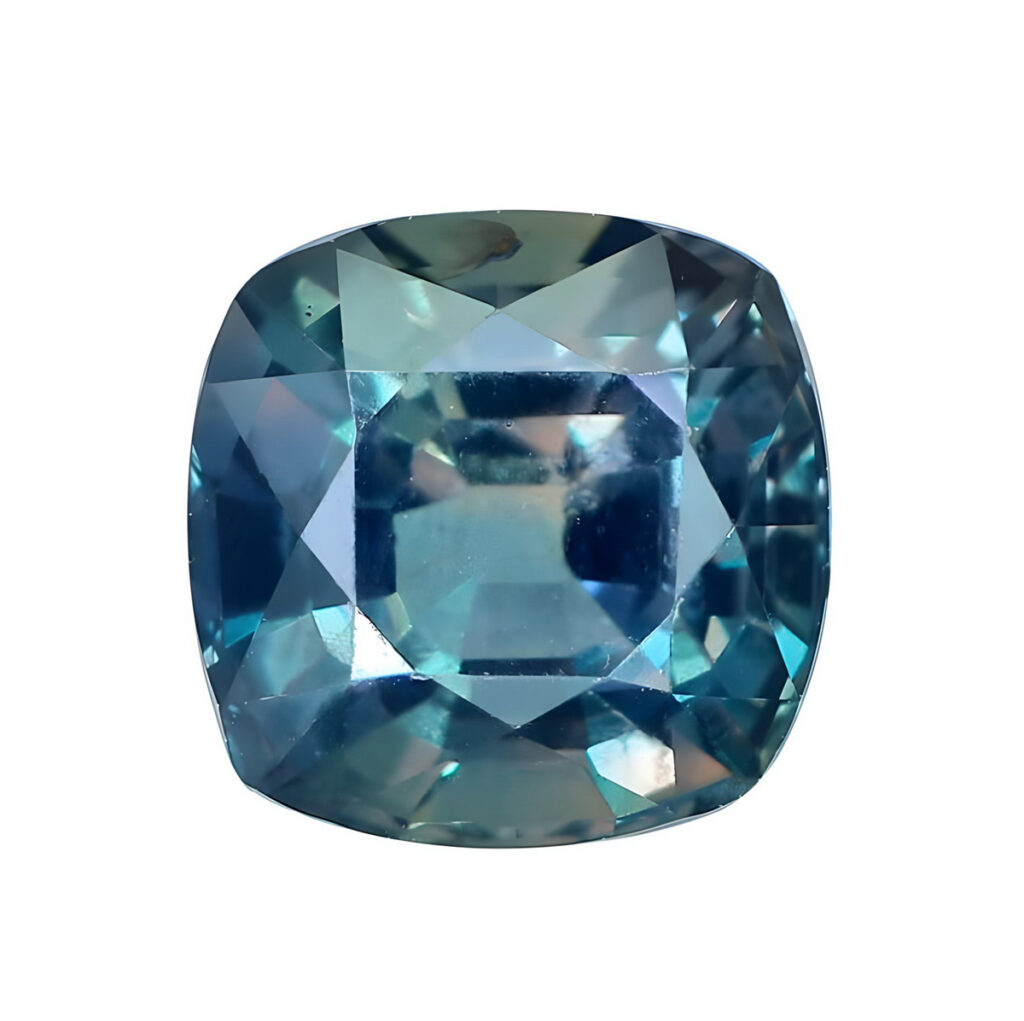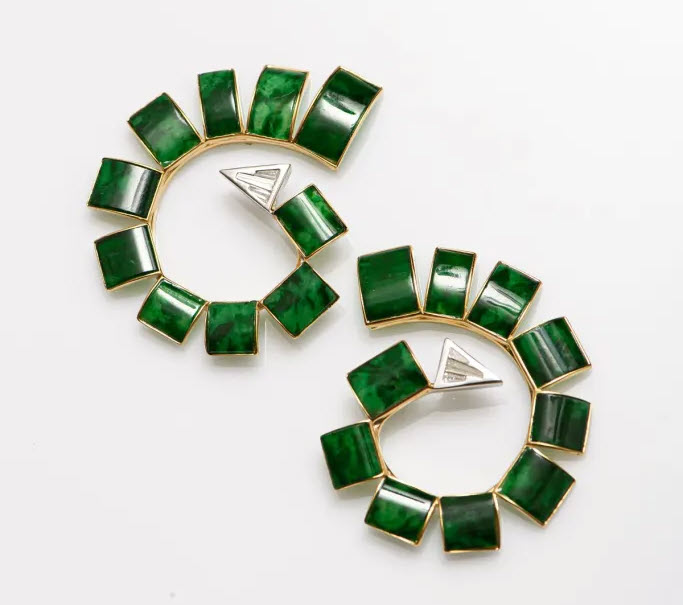Chavdar Chushev is an artist, restorer, jeweller, and master of the ancient art of gem carving. His unparalleled expertise accumulated over 40 years and distinct creative vision have made him one of the most respected jewellery designers in his field. Intaglio was first used to adorn cylinder seals during the Assyrian and Babylonian times. Throughout history, intaglio rings and pendants took many forms and were designed in diverse materials ranging from gold to hardstones with reverse carvings. We discuss in detail his background and passion for this ancient technique.

- You use the ancient engraving technique intaglio in your jewelry, could you tell us more about this and its tradition and history?
Intaglio engraving as an art form is deeply rooted in ancient history, dating back to the Assyrian and Babylonian times when it was used to adorn cylinder seals. These were devices much like modern day wax seals but in the form of short cylinders about 25mm long. When rolled onto strip of a soft clay, their intaglio engraved surface would make a positive impression which would personalize or authenticate a product or a document.
2) Where did the idea and passion to work solely in intaglio come from?
I prefer to work in intaglio for two reasons. Intaglios have dual functionality, whereas cameos are purely for decorative purposes or as an adornment. Intaglio functions as seals to produce impressions in clay or wax to secure or personalize various items. At the same time, intaglios are highly decorative and especially in certain translucent or transparent stones, they appear as stunning three-dimensional images not unlike modern day holograms. There are many ancient texts that describe intaglios as “coming alive” from within the stones. Lastly, using the intaglio technique, a skilled engraver can create astonishing details that are impossible to create in cameo of the same size and subject.
3) Where did you learn this ancient technique from?
Unlike today, where we can start learning how to fly an airplane with instructions posted on YouTube, 27 years ago I had no such luxuries. I read every book in the Los Angeles library network on the subject of gem engraving and using bits and pieces of information found within the texts, many often 200-300 years old. I learned on my own by trial and error. Initially, I used dental burrs which produced very rough and crude images. It took me a year to figure out how to engrave with loose abrasive and oil. It turned out that I was using the wrong type of oil. Petroleum jelly instead of olive oil works best.

4) What makes this technique so special?
At a young age, my father and older brother painted miniature orthodox icons and I became fascinated by this art form. Art in miniature became my passion as a teenager, where I began miniature carving and jewellery design. I started carving various soft organic gems, but it was when I immigrated to the United States that I attempted hardstone intaglio. My interest further grew after my first visit to the Getty Villa in 1993 where I saw the debut collection of engraved gems including the works of Ancient engravers such as Master Epimenes and Master Apelles. In ancient times, talented and highly skilled artists were able to create stunning images using very simple tools. Some exquisite gems were created even without the use of iron, as tools were made from soft bronze, copper, wood and bone. This is what makes intaglio engraving so special.
5) Could you explain to me the technology behind carving precious stones? How has this changed and have you innovated this technique over the years?
The technique of engraving or carving gems is a relatively simple process. As Ken Lapatin, curator of antiquities at the Getty Villa once said after carving his first intaglio following my instructions: “It is not difficult to carve a gem. It is difficult to carve it well”. The method of carving a gemstone is the same as the technique used by ancient Egyptians to cut large blocks of granite or drill huge holes in the stone, using soft copper tools. Copper is considerably softer than granite, but it is not the metal that does the magic. The addition of a finely ground stone and lubricant (oil or water) into the cutting area does the trick. Under the pressure of the tool, the stone particles become embedded in the malleable copper and turn it into an abrasive drill or saw blade. The exposed hard stone edges do the cutting or grinding, and the soft copper is only the binder. This ground stone is not just any stone, but it is Emery. Emery was mined solely in the Old World and the Greek island of Naxos. In fact, it goes by the name of Naxos stone since Roman times. This stone comprises of mostly sapphire which is second in hardness after diamond. Therefore, by using Naxos stone an engraver can carve any stone available except diamond and sapphire.
Gems carved on a saw were called a gem engraving lathe, a horizontal spindle that was rotated by the means of a bow. Hence, its other name, “Bow driven lathe”. The spindle is tipped with variously shaped tools. Some are like car wheels, some inverted cones and some are like large or tiny spheres. The engraver works the bow back and forth with one hand which causes the spindle to rotate and with the other brings the gem to the metal tip covered with abrasive and oil. Small files frequently made from hard woods like boxwood, bone or soft metal are “charged” with an abrasive and used where the design calls for flat areas instead of concave shapes. It’s very simple indeed. The results depend on the skill, dexterity, patience and the carver’s sharp eye. There is an ongoing discussion in the scholarly circles whether only nearsighted engravers were able to achieve greatness or if they used a magnification aid such as loupes made of rock crystal. I personally think both.
Today, most engravers use widely available diamond powder and instead of bow driven lathe they use electric powered tools. Over the years, I have used every possible gem engraving method and have arrived at a combination of techniques which suit my personal needs and style. My goal is to first remove most of the material and achieve the rough general shape of the engraving. I then use modern electric powered tools to begin creating finer details, then switch to increasingly smaller tools to clarify the motifs. Some of the Ancient techniques described earlier accomplished some of the finishing work. This stage of the process is where the real pleasure and excitement is for me. Eleven years ago, I produced a gem engraving video for the Getty museum which is available on their website and YouTube channel here: https://www.youtube.com/watch?v=xgTpGASqrKY
6) In your intaglio engravings, you tend to use classical themes – religious, gods and goddesses. What inspires your designs and why do you lean towards traditional iconography?
I am drawn to classical compositions because they are very educational. I learn more about the ancient world and civilizations from every gem I carve. I also adore the challenge of coming as close as possible to an ancient masterpiece carved millennia ago. Occasionally, I engrave other themes such as animals, insects, or coats of arms, but they do not have the same allure for me.
7) What challenges do you face with working in intaglio?
I became involved with intaglio engraving because I love challenges. Every gem or composition presents a different challenge and usually requires an individual approach. Classical themes typically involve nude figures which present the most difficulties a gem engraver can face. For me, it is very gratifying to be able to understand the thought process of an ancient master and try to come close to their handling of the composition and anatomy.
From a technical standpoint, I rarely have challenges working in intaglio. A potential issue is not being able to see your work well enough, however, I resolved this by using a microscope. My hands are as steady as they come, and I hope they stay that way for a long time.













